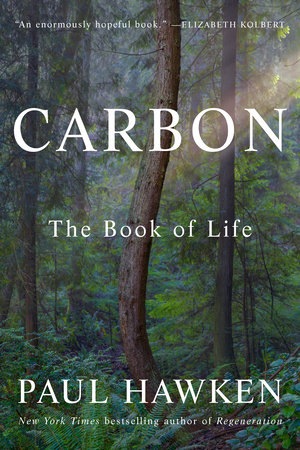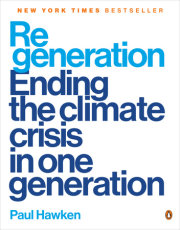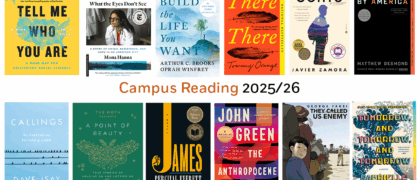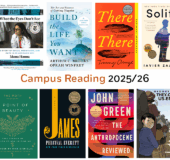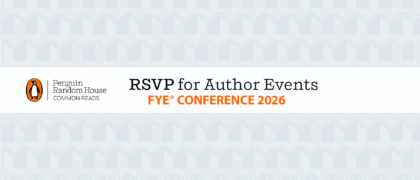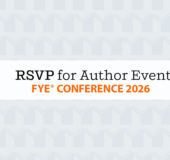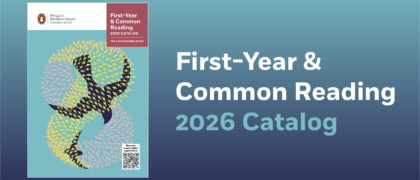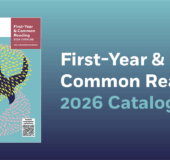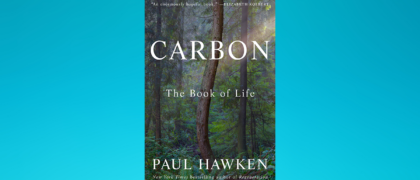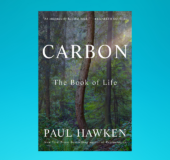One
Carbon
"
There are things we must do, sayings we must say, thoughts we must think, that look nothing like the images of success that have so thoroughly possessed our visions of justice."
—BÁYÒ AKÓMOLÁFÉ
Carbon moves ceaselessly through the four realms—the biosphere, oceans, land, and atmosphere. It flows in rivers and veins, soil and skin, breath and wind. It is the narrator of lives born and lost, futures feared and imagined. It is the courier coursing through every particle of our existence, the interwoven lattice that permeates cultures, lagoons, minds, grasslands, organisms, and our temporal life. Carbon’s dance of life does not take sides; it is never right or wrong. It is a timeless path that endlessly unwinds before us. Like Ariadne’s thread, the flow of carbon is a story that may allow us to escape the labyrinth of anxiety, ignorance, and fear the world bequeaths. Carbon’s increase in the atmosphere moves in tandem with the loss of the living world.
The Book of Life encircles what has always regulated climate, the pulsing, living mantle we call Earth.
Like you, I take in the news, the science, the confusion, the broken politics—a world unfurled, fearful, at wit’s end, shrouded in shallow certainties. To better understand the riddles and luminosity of life, I chose to go far upstream, to headwaters, and look at the flow of life through the lens of carbon. Rather than bemoan the plight of the world solely through forecasts and portents, I turned to voices who see the planet absent the overlay of threats. Might there be wisdom domes as well as heat domes? There are women and men merging observational Indigenous wisdom and Western science into a different understanding of our place on Earth, a perspective that reveals what we do not know. Certainties are dissolving. They are being replaced by unfathomable complexity. Though carbon comprises a tiny fraction of the Earth, a planet without it is a dead rock in space, like a sky without stars, a symphony without sound. We have reduced carbon to an errant element, the culprit in a civilization bent on self-termination. The crises of a warming planet, rampant injustice, and collapsing biodiversity form a whole. Carbon, people, and nature are set apart as if they were independent. Carbon is a window into the entirety of life, with all its beauty, secrets, and complexity. When discussing carbon, people refer to atoms instead of magnificence, physics rather than sentience. Life is a flow, a river, not isolated components. Stubborn beliefs, petty details, and irrelevant media can splinter our awareness. The flow of carbon provides better stories, other ways to see, visions of possibility different from the disjointed and chaotic narratives that engulf us.
From a planetary view, the warming atmosphere is a response, an adjustment, a teaching. Earth’s climate is not breaking down as some would have it. However, it is changing faster than humans can adapt. Global heating foretells a tumultuous future. If human-induced greenhouse gas emissions are not curtailed, civilization will be. After decades of unwavering coaching by climate scientists, the world has awakened to climate dynamics. The changing atmosphere is front and center for companies, countries, schools, and universities. Investors are creating the most significant capital event in human history. Climate will be the fulcrum of finance for decades to come. Although banks, investors, and pension funds were once apathetic to financing a livable future, the prospect of decarbonizing the $110 trillion global economy has changed many minds. What is on the agenda? Every home, car, train, plane, truck, city, ship, product, farm, building, and utility in the world. Regarding resources, all wood, steel, concrete, fiber, plastics, and minerals.
For industry, the changing climate is seen as an engineering problem, not a crisis of behavior, consumption, or disconnection. There is a tacit assumption that the current fossil fuel– based energy system can be swapped out for renewables and the privileged can continue to live the way they do. This is magical thinking. To remedy global warming, oil companies strive to capture and remove carbon from the atmosphere as if it were an overflowing storage depot. It is emblematic of how business has come to perceive the Earth—a manageable contrivance humans can service, modify, and fix. It implies that a juggernaut economy can tame the atmosphere with claims of being carbon neutral. The current lifestyle of the world is maintained at the cost of a terrifying future. There is no defense for our misguided conduct and the disintegration of the living world.
Entrepreneurs have created carbon dioxide markets, as was once done with enslaved human beings and ivory tusks. There is now a marketplace for biodiversity credits. The International Monetary Fund calculated the value of a blue whale at $2 million—a so‑called nature-based solution, a term that implies we can fix the natural world the same way we are attempting to repair the atmosphere. What could the monetization of a whale possibly mean? The unswerving belief in the marketplace as a means to create a better world is belied by history. Extracting and selling the biosphere to the highest bidder is the cause of global warming and social injustice. Stepping back from the inordinate obsession with wealth, it is apparent that commerce is eliminating life on Earth to pay shareholder dividends.
When Prince Hamlet lamented, “There’s the rub,” he was contemplating suicide and realized it required leaving his mortal coil. The rub for civilization is the curious, delusional beliefs of commerce. Citizen Potawatomi biologist Robin Wall Kimmerer explains the snag: “We need more than policy change; we need a change of worldview, from the fiction of human exceptionalism to the reality of our kinship and reciprocity with the living world. The planet asks us that we renounce a culture of endless taking so that the world can continue.” This cannot happen if political, financial, and corporate powers think solely about future gains. The task of modernity is to recognize that our existence rests upon the entirety of planetary life.
The world economy is undergoing a massive energy transition; a civilization based on fossil-fuel combustion is transforming into one powered by current solar income: solar panels, wind turbines, and hydro. The necessity is clear. Governing and financial institutions required decades to embrace the climate crisis. Yet, now that they do, the dominant discourse about the crisis places the living world into a subordinate position, a distinct category, essential to be sure, but not as urgent, usually referred to as biodiversity. How greenhouse gases change the atmosphere is well known. How trillions of living entities regulate the atmosphere and generate the bounty of our home planet is not understood. Bioethicist Melanie Challenger describes how “we are trying to design life on our own terms even while we are killing life on its terms.” As human wants continue to unravel the planet’s capacity to regenerate, we enter an unimaginable future of biological poverty, where our attempt to redress the atmosphere will hardly matter. In all of Earth’s multibillion-year history, that which did not work, that which did not serve life, was discarded. Why are we in that queue?
Millions of years of earthly wealth have been consumed and eliminated in the past two centuries. Reefs are perishing, pollinators are declining, oceans are acidifying, fisheries are ransacked, forests are toppling, soils are eroding, lands are desiccating, birds are vanishing, and wildlands are dwindling. A future can only be grasped if there is an accurate understanding of the present. We are attempting to sever the human world from the natural world as if that were possible. The current system of production and consumption eats its host. Enshrined economic practices beget and ensure the losses. Challenger writes, “Our cities and industries have left their imprint in the soil, in the cells of deep-sea creatures, in the distant particles of the atmosphere. The trouble is that we don’t know the right way to behave towards life. This uncertainty exists in part because we can’t decide how other life-forms matter or even if they do.”
Replacing fossil fuels with renewables is crucial but insufficient. Humanity depends upon its relationship to all of Earth’s habitats and denizens, even if we don’t think so. Society, commerce, and governments must focus on what journalist Eric Roston calls the dance of carbon, the constant regeneration inherent to life. This does not preclude technical innovation and invention. Technologies are needed that pass an essential threshold: Does a solution, stratagem, or proposal create more life or less? We have tried less, and this is where it has brought us. What does more look like? Pure water, clean food, vibrant cultures, honored people, ancient forests, human health, equity, education, abundant fisheries, wildness, quiet green cities, rich soil, living wages, and dignified work.
Though largely ignored by the media and news feeds, the movement to regenerate the living world exists in thousands of organizations and millions of people. Life-giving communities are smaller, submerged, and unnoticed by mega-institutions whose marketing, publicity, and social media dominate our lives. The actions of citizen-led and Indigenous communities are based on reciprocity, mutualism, and reconciliation with the natural world, qualities that do not lend themselves to the news cycle. Their work reflects what evolutionary biologist Peter Kropotkin noted early in the last century: cooperation and collaboration are far more effective than competition when the environment is changing and resources are scarce. He was thinking of Russian wheat fields and bad weather, but his insight applies equally well to the world today.
The Earth is sensitive. Changes in atmospheric gases affect all of our planetary systems. Without carbon in the atmosphere, we are a frozen Mars, and if too much, the cauldron of Venus. We are one of 8.7 million species on an exquisite, delicate planet. In sheer biomass, human beings represent 0.01 percent of all life. All other life-forms create bountiful entangled communities that do not double-glaze the atmosphere with carbon dioxide. To better understand the community of life, we need to look no further than the community of our bodies. Our bodies would perish without untold trillions of microorganisms that live within and upon us. Each cell conducts millions of activities at any given moment. These occur because flows of carbon connect, integrate, and interact flawlessly. This is our planet, and this is our body, intricately fused to its complex home. Your body’s collective cells undergo ten times more processes in one second than there are stars in the universe. This was foretold by Charles Darwin when he poetically predicted that science would discover that each living creature was a “little universe, formed of a host of self-propagating organisms, inconceivably minute and as numerous as the stars of heaven.” Life only exists in cells, each cellular community containing 100 trillion atoms that self-organize into molecules that create and maintain the conditions essential for existence. When cells clump together, which they like to do, they form the biological galaxy of the human body and the species we share the planet with, from corncrakes to protozoa, smelt to crickets, blue whales to calendula.
The vanity of the solitary, self-sufficient individual exists solely in comic books and Westerns. Most aspects of modernity amplify that delusion. From legal rights to deeds, from economic theory to the right to own an assault rifle. We are urged to fight and combat climate change, a delusional reprise of Don Quixote, a stark example of how we “other” the living world. To change the atmosphere, we will need to mimic the intricate flows of planetary carbon. Social and economic relationships need to be integrated within rejuvenated social and natural ecosystems in ways that concentrated forms of economic power cannot overrule.
Western science became the dominant basis for classifying the living world in the Age of Enlightenment. Plants were things, forests were cellulose, fungi were food, soil was dirt, animals had no feelings, and nature was there to be extracted, commodified, and sold. It was a profound failure of imagination and perception. The curiosity and ingenuity that sparked the Age of Enlightenment became scientism, an unswerving rationalism that dismissed other ways of knowing. It observed nature and developed testable models that putatively explained the natural world. Except they didn’t.
Original inhabitants who lived continuously on the same land, sometimes for over fifty thousand years, see nature differently. The living world is a family, and as with all relations, a life that never repeats itself. The presence and survival of some five thousand Indigenous cultures depended upon their becoming masters of pattern recognition to understand how to thrive in forests, deserts, the Arctic, islands, and grasslands. Their teachers included all that thrived: plants, animals, elders, children, and those that came before. Native Americans gathered, hunted, and farmed in ways that created bountiful food and resources for those who followed. That Westerners do not act or see themselves this way reflects what we believe, what we have done, and what we are coming to regret.
The human journey is the daily practice of gaining and sustaining life. We can do this selfishly or gracefully. Within and around us is a living, breathing sphere of consciousness woven by a billion years of evolving life. Sentience is underfoot, in the canopy, in the favelas, in the breath of a child, the intricate, masterful web of life beneath, above, and around us. This awareness is always our story. A broken planet lies before us, but there is also a buzzing, thrumming, thriving sphere imbued with imagination, mystery, and courage. These pages are a journey into the realm of plants, the cosmos of insects, labyrinths of fungi, droves of mammals, spinneys of trees, and convocations of human brilliance. The flow of carbon is a sacred dance that entwines and weaves through all our stories.
Philosopher and Yoruba poet Báyò Akómoláfé describes moving away from the profane and desperate toward a deep sense of respect for our sacred home: “May this decade bring more than just solutions, more than just a future—may it bring words we don’t know yet and temporalities we have not yet inhabited. And may we be visited so thoroughly and met in wild places so overwhelmingly that we are left undone. Ready for composting. Ready for the impossible.”
Copyright © 2025 by Paul Hawken. All rights reserved. No part of this excerpt may be reproduced or reprinted without permission in writing from the publisher.

